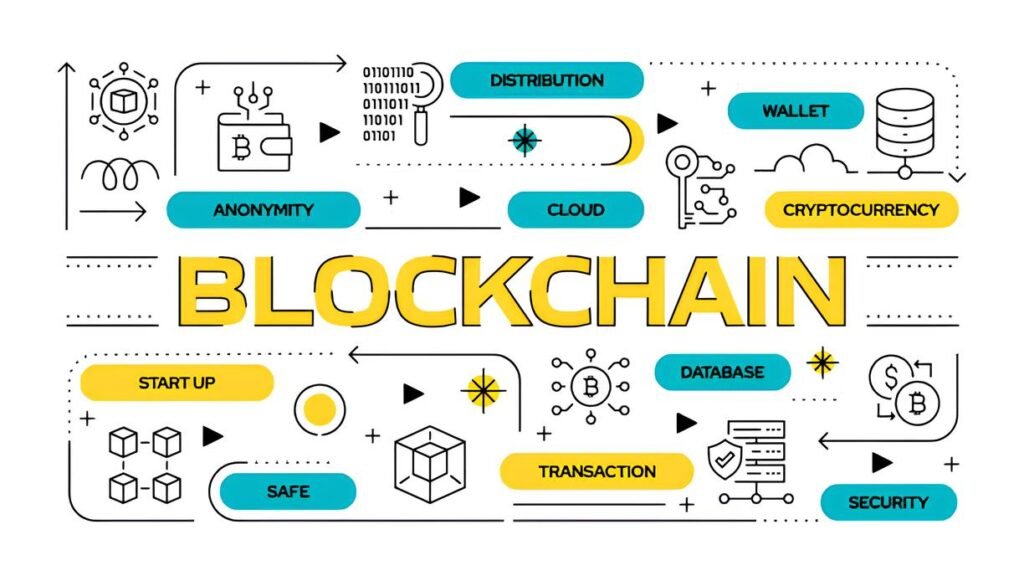Interlinking Tools: Connecting PGP, Tor, and Crypto Safely
Imagine sending a secret letter inside a locked box, slipping it through a maze of hidden corridors, and then paying for goods without leaving a trace of who you are. It sounds like a spy thriller, but it’s daily life for privacy-conscious users relying on powerful tools like PGP, Tor, and cryptocurrency. These tools each serve a unique role in protecting your identity and communication, yet their power shines brightest when used together—but only if you connect them properly and safely.
Many slip-ups happen not in using one tool but in how they interlink. It’s the difference between a foolproof safe and a leaky pipeline—one vulnerable step undermines everything else. So, how do you weave these digital webs of security without tripping over your own worst enemy: human error? Welcome to the art and science of interlinking.
In This Article
Understanding the Foundations: PGP, Tor, and Crypto
Before diving into their interconnections, it’s crucial to grasp what each tool does individually. PGP (Pretty Good Privacy) offers encrypted communication, protecting the content of your emails and files from prying eyes. Tor (The Onion Router) anonymizes your internet activity by routing traffic through multiple encrypted nodes, masking your IP address. And cryptocurrency enables decentralized, pseudonymous financial transactions without relying on traditional banks.
Each serves a different purpose in the privacy arsenal—one secures communication, another anonymizes access, and the last masks financial trails. But when misconfigured or used carelessly, their combined strength falters.
How PGP Protects You
PGP uses a pair of cryptographic keys—a public key to encrypt messages anyone can use, and a private key only you control for decrypting. It’s the digital equivalent of handing someone a locked mailbox where only you have the key. The goal? To ensure that only the intended recipient can read your message, no matter where it travels.
What Tor Brings to the Table
Think of Tor as a labyrinth for your internet traffic. Instead of connecting directly to a website, your traffic hops through at least three relays spread worldwide, encrypted at each step. This multi-layer encryption—hence “onion routing”—makes it practically impossible to trace your original IP address or your browsing habits back to you.
The Role of Cryptocurrency
Cryptocurrency, like Bitcoin or privacy-focused coins such as Monero, allows you to move value without revealing your identity or going through centralized authorities. Its blockchain technology provides transparency, but also privacy challenges—especially if you don’t take steps to obfuscate your transactions.
Why Interlinking Matters: Strength in Integration
Understanding the individual tools is half the battle; the real challenge—and strength—comes in connecting them seamlessly. When used in isolation, each tool provides privacy benefits but also weaknesses.
- Tor alone: Protects IP and routing but doesn’t encrypt message content.
- PGP alone: Encrypts messages but doesn’t anonymize sender or metadata.
- Crypto alone: Enables anonymous transactions but can leak metadata and IP without layers.
Interlinking combines these strengths to fill gaps. For example, sending a PGP-encrypted message over Tor hides both message content and the sender’s location. Paying for services with cryptocurrency under Tor anonymizes both payment and connection.
But careless mixing can create leaks. Attach your real-world email to your PGP key without caution, and metadata will expose you. Purchase cryptocurrency without circuit-routed connections, and your purchase links to your IP. This “chain of trust” can break at the weakest link, erasing anonymity.
Best Practices for Safe Interlinking
There’s an art to safely connecting PGP, Tor, and cryptocurrency. Here are the fundamentals for creating a resilient privacy workflow:
- Keep your PGP keys separate. Use different key pairs for different contexts, such as personal vs anonymous communications.
- Always route sensitive traffic through Tor. Whether sending encrypted emails or accessing cryptocurrency wallets, use Tor to mask your IP.
- Avoid reusing usernames or emails across platforms. Build distinct digital pseudonyms when possible to prevent correlation attacks.
- Use privacy-focused cryptocurrencies. Monero’s ring signatures and stealth addresses, for instance, reduce linkability better than Bitcoin.
- Verify PGP keys offline. Ensure you’re using authentic keys verified through trusted channels to prevent MITM (Man-In-The-Middle) attacks.
- Handle cryptocurrency through Tor-enabled wallets or apps. Some wallets support Tor natively, preventing IP exposure when broadcasting transactions.
- Isolate devices. Use dedicated hardware or virtual machines for sensitive activities to limit cross-contamination.
Use privacy-hardened operating systems like Whonix or Tails when interlinking these tools. They are designed to route all traffic through Tor safely and prevent DNS or IP leaks.
Common Pitfalls and How to Avoid Them
Even the best intentions can falter without careful attention to detail. Here are classic mistakes and how to steer clear:
- Leaking metadata from PGP email headers: Email headers can reveal your IP address and more, even if the message body is encrypted. Use Tor-enabled email providers or client-side encryption combined with anonymous email accounts.
- Using cleartext VPNs or proxies before Tor: Some users layer VPN and Tor but trust the VPN provider too much. A malicious VPN can log and reveal your IP before traffic enters Tor.
- Reusing crypto addresses across transactions: This makes blockchain analysis easier, reducing your anonymity. Always generate new addresses for each transaction.
- Not validating PGP keys safely: Accepting keys without verification opens doors to impersonation.
- Relying on smartphone wallets without privacy measures: Mobile wallets often transmit data outside Tor, risking IP exposure; use desktop wallets with Tor capability instead.
Addressing these pitfalls requires vigilance and discipline, but proper behavior can preserve your layered defense.
Real-World Scenarios of Interlinked Security
Let’s examine a couple of practical examples where these tools come together.
Scenario 1: Secure Contact with a Whistleblower
Jenna wants to send a confidential message to a journalist. First, she obtains the journalist’s PGP public key via an anonymous forum accessed through Tor. She composes her message with strong end-to-end encryption using PGP on Tails OS, ensuring both message content and her origin IP remain private.
Using an anonymous email provider accessible only over Tor, she sends the encrypted email. The journalist, in turn, replies with PGP encryption. Any payment or reward Jenna provides to the journalist is transferred via Monero, using a Tor-enabled wallet, keeping Jenna’s financial trail invisible.
Scenario 2: Purchasing Privacy Tools Safely
Alex wants to buy privacy hardware online without revealing his identity. He accesses the vendor’s site exclusively via Tor and pays with Bitcoin. However, Alex understands that Bitcoin alone is traceable, so he uses a multi-signature wallet and a mixing service over Tor to obfuscate his transaction history.
Alex also PGP-encrypts order details sent via email, using a dedicated anonymous email account accessed through Tor to avoid linking with his real identity. By combining Tor for access, PGP for confidentiality, and cryptocurrency for payments, Alex lowers his risk of exposure.
Tools and Resources to Help You Connect Safely
Here are recommended tools to facilitate smooth interlinking of PGP, Tor, and crypto:
- GnuPG: A free, open-source implementation of PGP for encryption and signing.
- Tor Browser & Tor Service: Essential for anonymizing internet traffic.
- Electrum with Tor Support: A Bitcoin wallet enabling Tor connection to protect IP leakage.
- Monero Wallets (e.g., Cake Wallet, Monerujo): Designed to preserve transaction privacy.
- Tails OS: A live operating system that routes all traffic through Tor, perfect for sensitive activities.
- Whonix: A virtual machine operating system designed specifically to run all traffic through Tor.
- MAT2 (Metadata Anonymization Toolkit): Cleans metadata from files before sending, enhancing operational security when sharing documents or images.
For users who want a reliable workflow guide, the blog post How to build a digital pseudonym that doesn’t collapse under pressure offers valuable insights into maintaining separate online identities which are essential when interlinking these tools effectively.
Remember, no tool is foolproof on its own. Combining these principles and regularly updating your understanding of privacy threats is your best defense.
FAQ
Q: Can I just use PGP without Tor when sending encrypted messages?
A: While PGP protects message content, it does not anonymize who sends or receives the message. Without Tor or similar anonymization methods, your IP and timing metadata can be exposed.
Q: Is cryptocurrency completely anonymous when used with Tor?
A: Cryptocurrencies like Monero provide enhanced privacy, especially when combined with Tor. However, Bitcoin and other transparent coins require extra steps like mixers or multi-sig wallets to approach anonymity.
Q: How do I know if my PGP key is authentic?
A: Verifying PGP keys through trusted channels such as direct in-person exchange or fingerprint comparison over secure methods is critical to avoid imposters or MITM attacks.
Q: Are hardware wallets safer when used with Tor?
A: Hardware wallets protect cryptographic keys from malware but need to be paired with Tor-enabled software for network privacy. Using both together offers robust security layers.
Q: What risks exist when interlinking these tools incorrectly?
A: Missteps can lead to IP leaks, correlation attacks, metadata exposure, or deanonymization—potentially undoing all privacy benefits.
Bridging Privacy, Technology, and Practice
The intersection of PGP, Tor, and cryptocurrency forms a fortress of digital privacy, but only if gateways between them are tightly sealed and thoughtfully maintained. Like any stronghold, each layer depends on the other—one weakness invites breaches.




Pingback: Choosing the right language for darknet communications | Torutopia
Pingback: How to build trust without identity on Tor forums | Torutopia